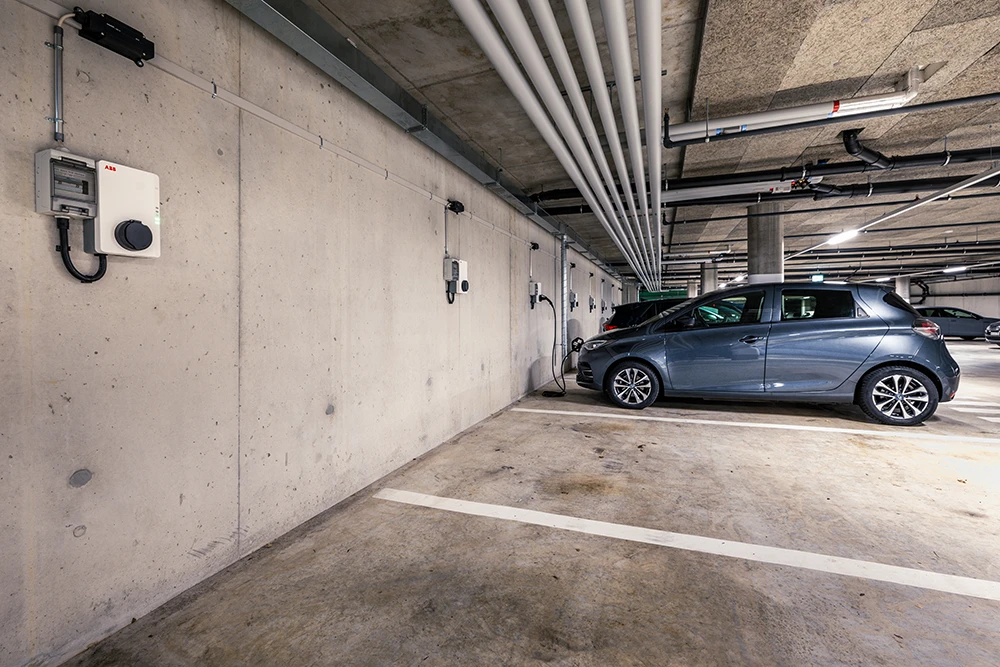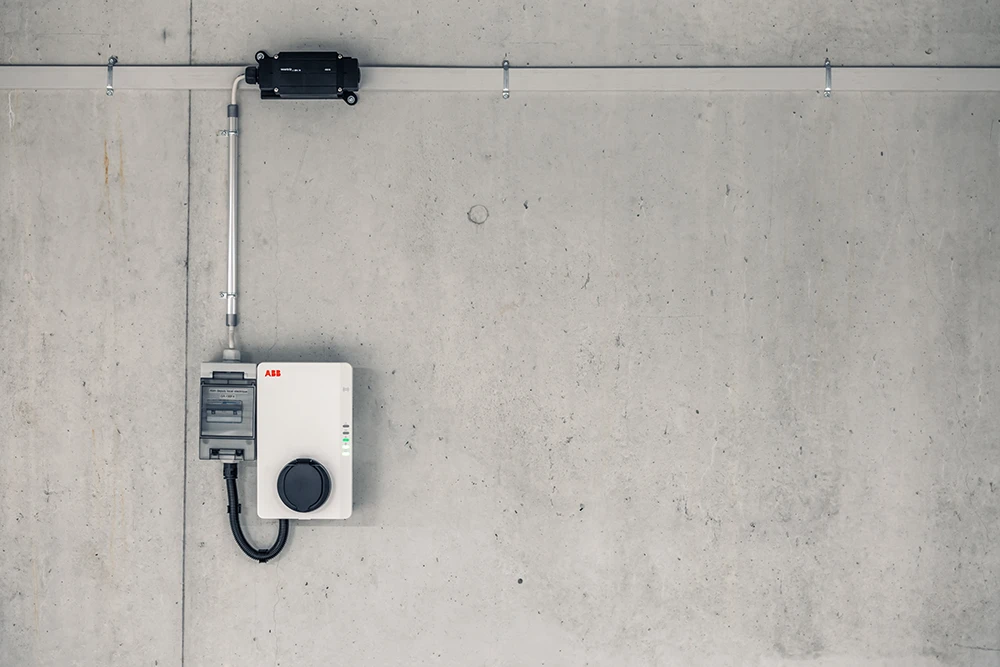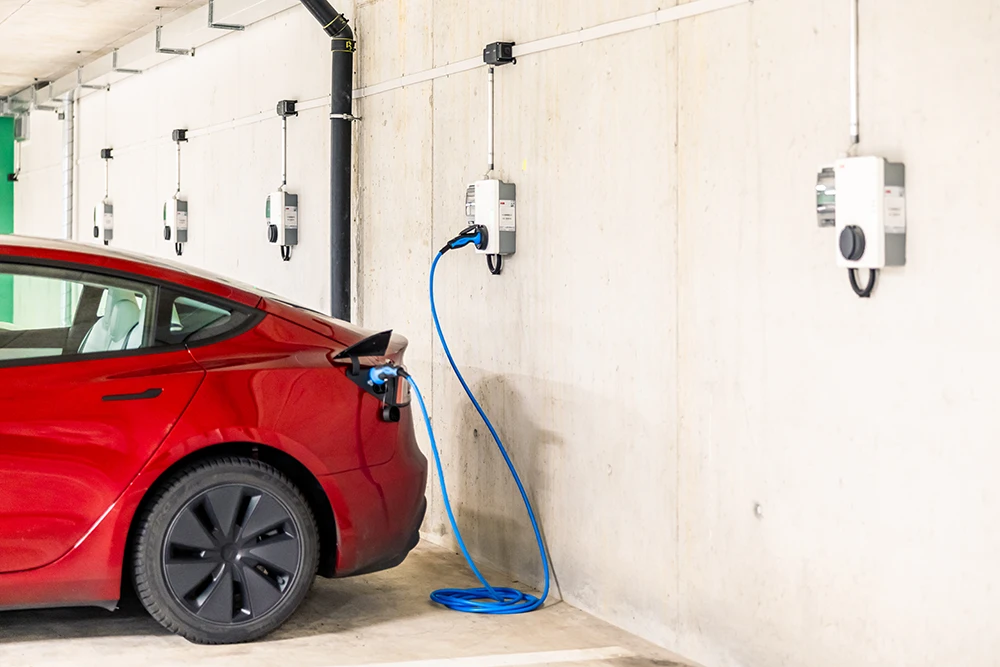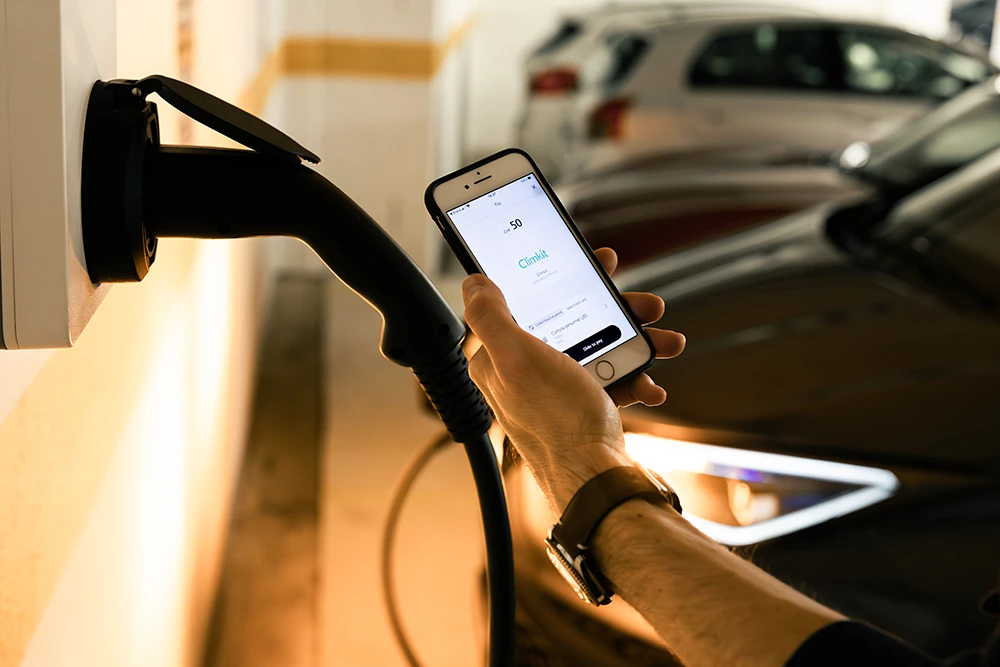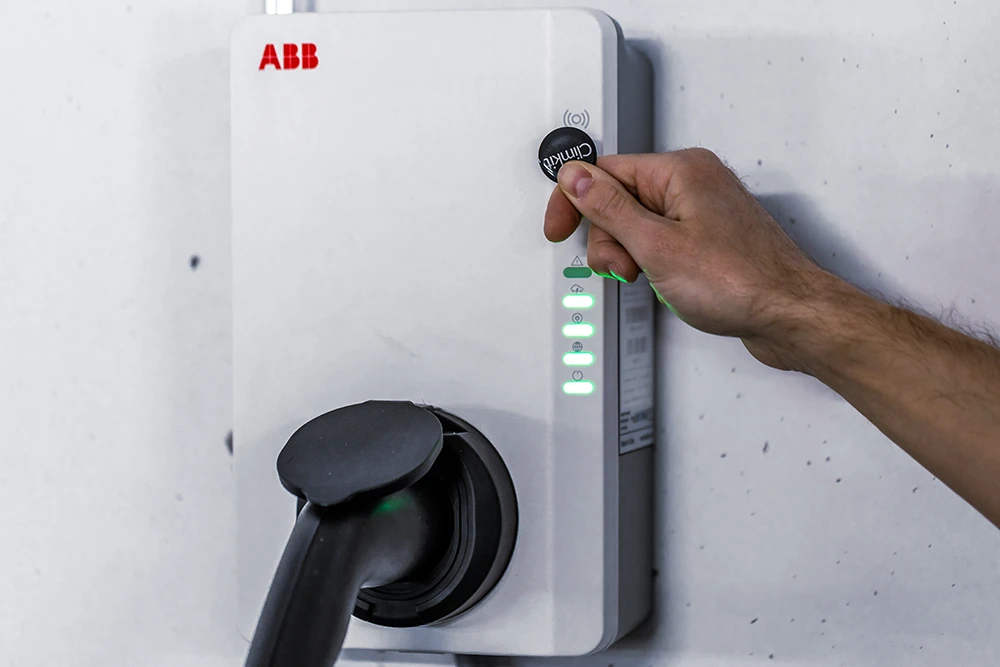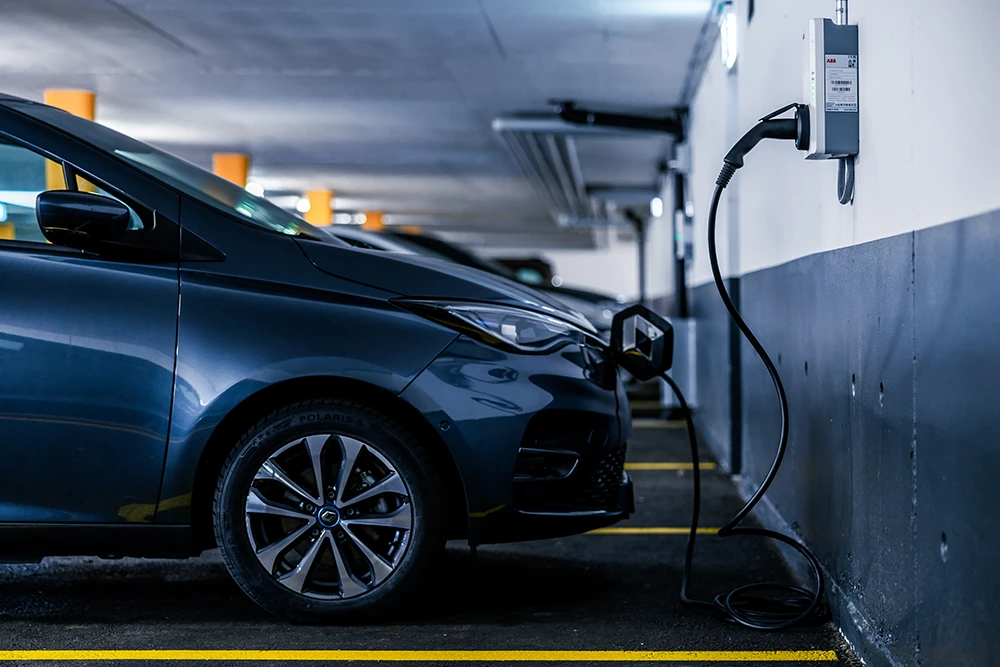- How does this work?
- How does this work?
-
Solutions
-
Other Solutions
-
Signage
Public display screens
-
-
Solutions
-
Community
Electricity metering and self-consumption
-
Heating
Settlement of building expenses
-
Mobility
Charging Stations
-
Washaccess
Collective laundry management
-
Ebike
Charging station for e-bikes
-
Optimisation
Optimization of self-consumption
-
Monitoring
Quality control of energy
-
Signage
Public display screens
- Hardware
- Hardware
- Prices
- Prices
- Partners
- Partners
- Blog
- Blog
- Documentation
- Login
- Contact us!
Mobility
Charging stations
Charging of electric vehicles in rental buildings and condominiums with individual metering and dynamic load management..

How does this work?
Thanks to the installation of a flat cable around the perimeter of the car park each space is thus ready to receive a 22kW charging station.
The chargers are then quickly installed as residents acquire an electric vehicle.
Power is automatically regulated according to the number of vehicles on charge and the available amperage.

Dynamic load power management
Climkit Mobility Dynamic automatically and instantaneously adjusts the power of the car park's charging stations to reduce charging time without ever exceeding the building's connection power.
Power is automatically regulated according to the number of vehicles on charge and the available amperage.
Although an internet connection is required for the identification of new users, operation is guaranteed even if the connection is temporarily interrupted.
Counting and billing

Refill
All charging stations are equipped with a user identification system via RFID key and an integrated counter connected via WiFi.
Billing
Every quarter Climkit invoices each user for his use of the charging station and pays the global electricity bill issued by the local electricity distributor.
Rental
For the owners who rent the charging station to their tenants, the cost of the rental can also be directly accounted for on the same invoice.
Sharing
A charging station can be shared by several users having a badge. Each user will be billed separately through their personal badge.
Charging column for public parking
Climkit charging stations can be set up to be used by passing users.
Via a QR code displayed on the charging station, the visitor directly selects a payment method (Twint or credit card) and recharges his vehicle at the rate chosen by the charging station owner.
The process is fast because no account creation is required.
Climkit then establishes a periodic statement and returns the money collected to the owner.


A versatile, compatible terminal
Climkit offers the ABB Terra AC (MID) charging station, compatible with all types of electric car.
Thanks to its integrated MID-certified meter, it accurately measures consumption at peak and off-peak rates, guaranteeing the most cost-effective recharging.
It also works perfectly with a photovoltaic system for solar-only charging.
What's more, Climkit is compatible with other terminals equipped with the open OCPP communication protocol, so there's no need to rely on a single supplier.
FAQs
The electricity is measured by the meter integrated into the terminal and is associated with the user identified by his badge. Climkit invoices the user monthly or quarterly at the rates defined by the owner.
You need to install terminals equipped with the OCPP communication protocol, which is open and standard. As a general rule, avoid terminals offered by car dealerships, which are more suitable for connections in individual homes.
Installation is carried out by a qualified electrician. The cost depends on the topology of the building and the car park. In general, the basic infrastructure for a car park with around twenty spaces costs between CHF 500 and CHF 750 per space. You then need to allow between CHF 2,000 and CHF 2,500 for the supply and installation of an individual charging point. <a href="https://www.climkit.io/en/blog/Do%20you%20need%20to%20install%20charging%20points%20in%20your%20car%20park/" target='_blank'>--> Find out more in our blog post: "Do you need to install charging points in your car park?"</a>
Yes, use of the charging points is open to people who do not live in the building, thanks to a QR code affixed to the charging point. Passing users pay directly for the occasional top-up of their vehicle via Twint or by credit card.
Yes, it is possible to share the use of a charging point, as each user identifies himself with his badge and is billed for his own consumption. As it only takes 4 to 5 hours to recharge the equivalent of 250 to 300 km, most residents only plug in once a week.
It is recommended that the basic infrastructure (flat cable) be installed in all the squares and that the bollards be installed as and when required by residents. It is also possible to install only a few terminals available to all, in visitor areas for example.
In rental properties, the landlord finances the basic infrastructure (installation of the flat cable) and the installation of the individual charging points in return for payment of a rental fee for the tenants who use the charging points. In a condominium, all the owners finance the basic infrastructure and then each pays for the supply and installation of their own terminal.
Charging power will be limited to the amperage of the flat connection. This will mean a longer charging time and a risk of the flat fuse blowing. With a dedicated connection to all the charging points in the building, the power is better distributed and regulated.
No, there's no need to increase the amperage of the electrical connection because flats and communal areas only consume a fraction of the power available and the rest can be made available to the terminals. In the event of peak consumption, the Climkit system temporarily reduces the power supplied to the terminals to prevent the fuses from blowing!

